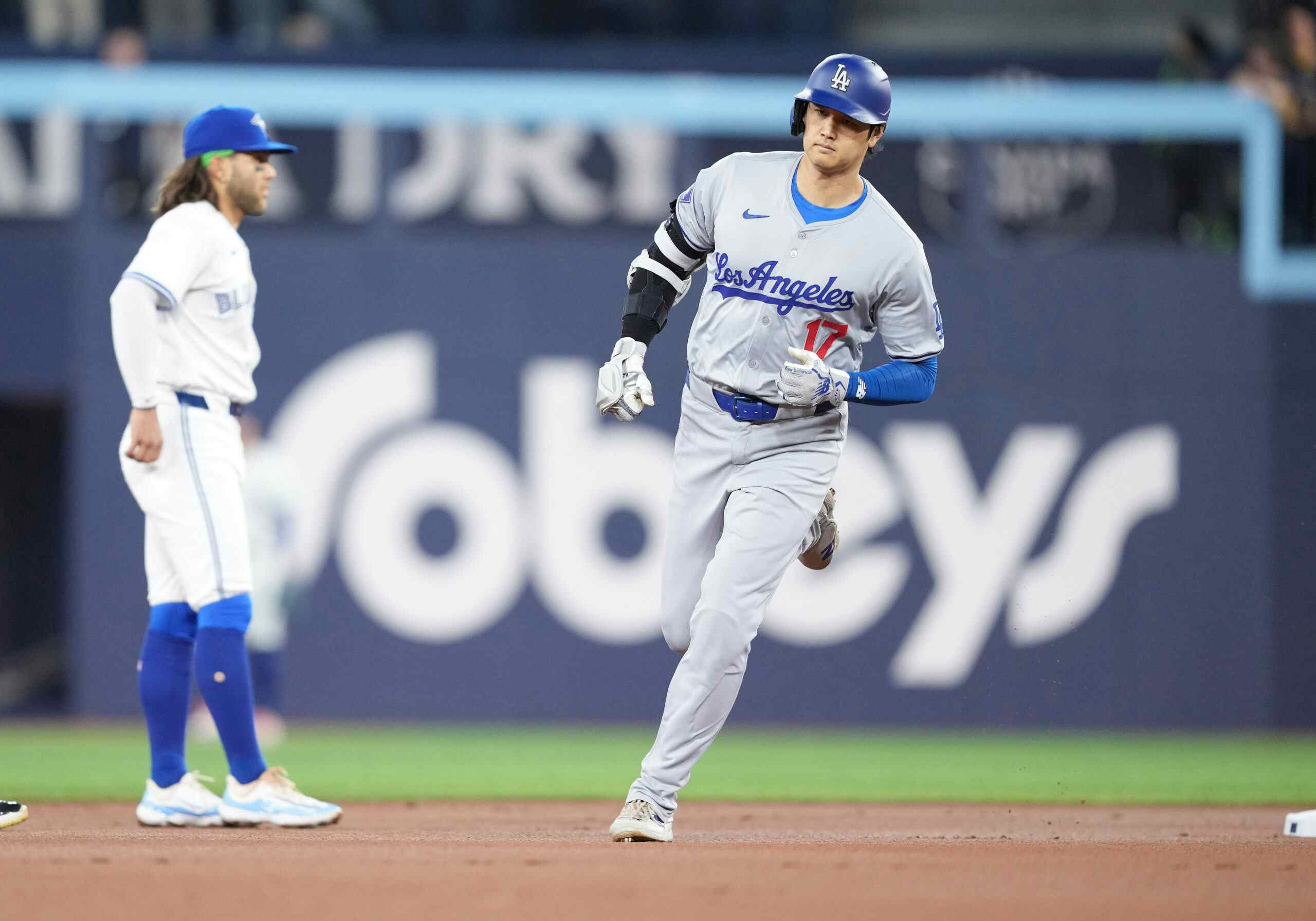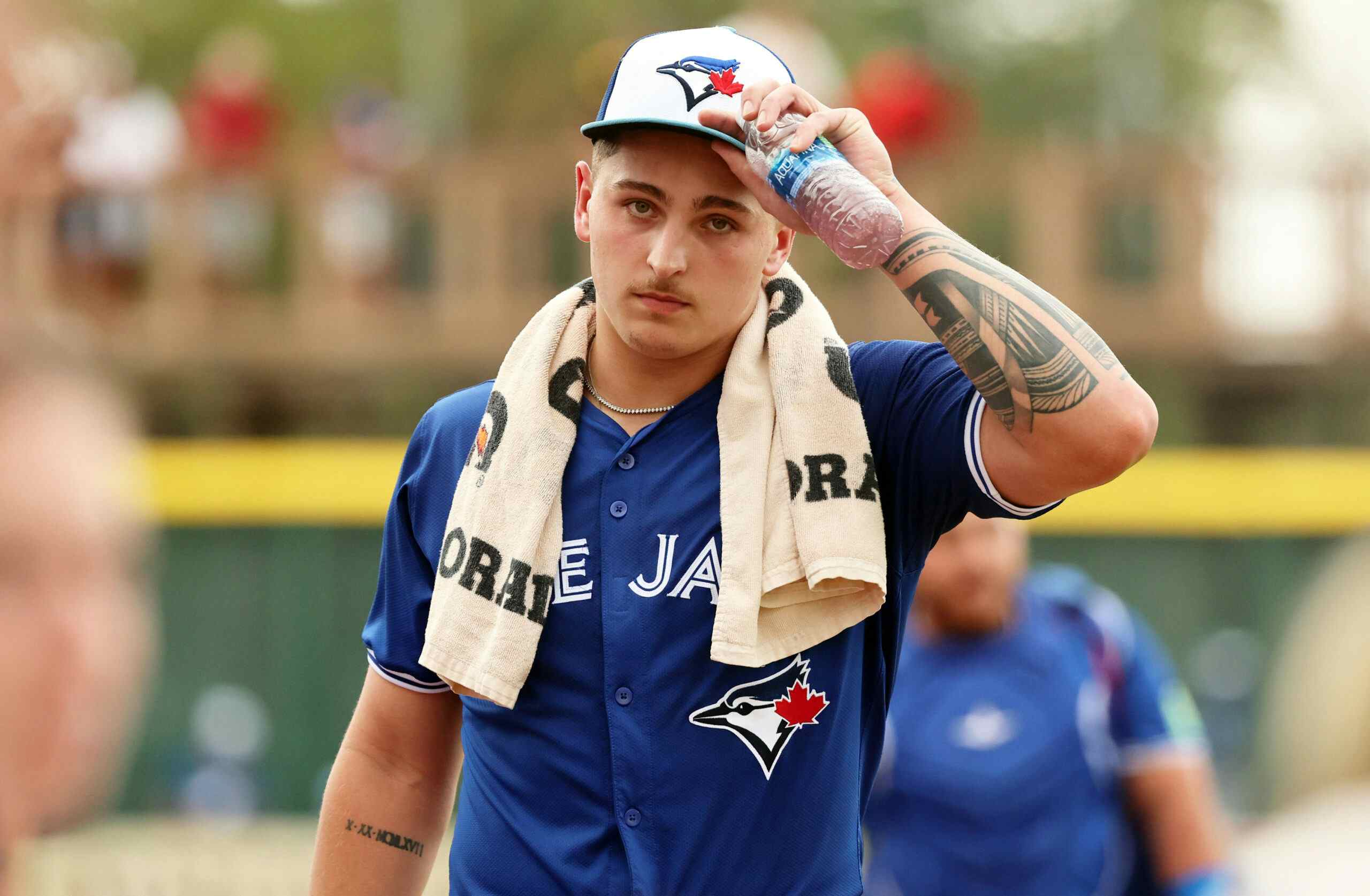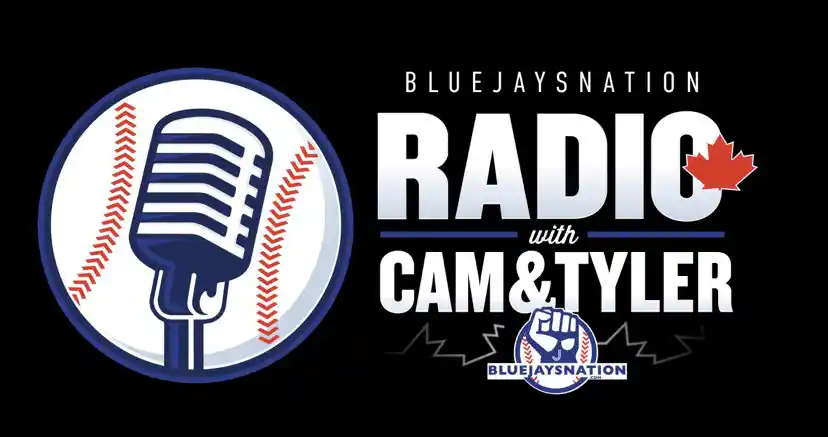Di Francesco: Talking MiLB, Pitchers, and Nate Pearson With Vancouver C’s Pitching Coach Jim Czajkowski

If you’re like me, you love keeping an eye on the Blue Jays’ pipeline. And I’m not sure about you, but I think that I value the direction that the organization is heading in the future almost more than the now.
Among Jays’ minor leaguers obviously Vladimir Guerrero Jr. and Bo Bichette are going to garner the lion’s share of the attention, but one player a whole lot of eyes are likely going to be on next season is the club’s first round pick, Nate Pearson, who Mark Shapiro gushed about when I spoke with him last month. So, with that in mind, I thought it would be a fun idea try to reach out to the Vancouver Canadians pitching coach, Jim Czajkowski, to talk about the youngster who might be the next great homegrown Blue Jays pitcher — among other things.
I contacted J.C. Fraser, general manager of the C’s, and he was kind enough to promptly respond and connect me with Jim. And if you don’t know who Jim is – aka Coach Cy, the name given to him by his players — he has coached at all levels in the Blue Jays’ farm system. He has worked closely with Sanchez, Syndergaard, Stroman, Osuna, Loup, Dermody, Ramirez, Rowley. Pretty much anybody from the organization that’s seen time in the big leagues, he has spent time with.
After Jim and I set up a good time for the both of us to do this interview through some back and forth texts, I called him up and congratulated him and the Canadians organization on winning the Northwest League Championship. He said that it was awesome and good times and a good fun team to be around. I jokingly said that it doesn’t hurt to get Nate Pearson and Logan Warmoth into the lineup, but he made a good point, mentioning that there’s good and bad to adding top draftees to a team like that. The good being, of course, that they have talent, but the bad being how it can be difficult to use them, as a lot of the college guys get tired because they’ve played almost all year round. Jim suggested that when young players first become professionals, they try to find another gear, and because they’ve had such a long season, sometimes they just don’t have that gear to go to. He said it’s actually quite difficult for the coaching staff, because they have to protect them as much as they can and not over use them.
This was a really interesting way to start! And it our conversation only got more interesting from there.
* * *
About “Coach Cy”
I figured to begin the ‘formal’ part of this interview it would be cool to just ask Jim how he feels, in general, about being able to work in baseball as a player and coach for so many years. He took a couple seconds to collect his thoughts and kindly responded:
It’s been a dream come true. When I was younger, watching some of the players in the seventies, I gravitated towards baseball. It was always something I loved to watch and loved to play. And being able to find a job in baseball is the ultimate.
Jim told me that he explains to his kids how important it is to find something that they love to do and to then try to make money at it. We talked a bit about this, and how it’s important to enjoy work because, well, let’s be honest – how happy can you be if you hate your job?
Anyway, you may not know this about Jim, but he played on the Durham Bulls during the time that the famous film (Bull Durham) came out. And I had to know what it was like to play for the Bulls that year:
You know what, that was one of my funnest seasons ever. We embraced it. We had a preview of the movie before our season started, and then when our season begin, the Durham Athletic Park, which sat about fifty-five hundred, was packed every night.
It was kind of fun listening to Jim get nostalgic about that season, as he took short pauses to stress how cool it was that the stadium was, stressing: Packed. Every. Night. He told me there were at least twenty-five to fifty press members at every game walking around, just because of the movie. And the great thing about the Durham team that Jim played on that year was that they went 82 – 58 that season in the Carolina League — they were actually really good.
About Player Development and Pitchers
I decided it was time to shift topics and start to move toward why I had originally contacted, Jim which, of course, was to talk about the awesome hard throwing Nate Pearson. But first I really wanted to know what changes he has seen in terms of player development from the time he was in the minors compared to today.
I think the focus on nutrition has improved. These guys eat much better — and this is just maybe in the last five years. The organization is setting aside actual guidelines and sticking to it. And the way that we feed our players, there is no excuse for poor choices. Before, it used to be McDonalds and eating Big Macs and Quarter Pounders, but now you actually have choices when you’re on the road to eat healthy.
He added that the weight lifting and conditioning has gotten more interesting, too. “Back in the day, as pitchers, we used to run a lot. Now the focus is not on endurance running, it’s more on short burst,” he said — though he didn’t seem to particularly agree with this. He added that “that there was always something, mentally, about long distance running that always helped pitchers with that aspect to their game.” But Jim explained that he understands the idea behind these quick burst sprints that pitchers do today, because it has to do with the seventy to a hundred “quick bursts” on the mound that their bodies go through in a game.
I asked him if any pitcher he’d worked with over the years had really impressed him and he said that Aaron Sanchez was a no brainer and then reminisced about the “three headed monster,” which was the term those in the organization used to refer to the trio of Sanchez, Syndergaard, and Justin Nicolino. Since he’d mentioned Sanchez, I asked Jim his opinion on the blister problem that so derailed Aaron’s 2017.
I’m not sure how it happened and how it keeps on reoccurring, I’m not in the loop on that. But if he doesn’t have blisters, he’s a Cy Young candidate. But I’m not sure why it keeps on popping up, and we couldn’t figure it out all year. I’m not sure if there was something that he was doing differently then what he did before. I just don’t know.
Talking Nate Pearson
To begin our discussion about Pearson, I mentioned that he’d said in a a pre-draft interview with Baseball America at a Florida showcase that all the top prospects he’d spoken to were big fans of Syndergaard, and that those guys who are praised for how hard they throw are the ones he looked up to. I asked Jim who he he thinks Pearson compares to. He took a moment to collect his thoughts and said, “Well, at this point, he’s better than Syndergaard was.”
Jim chuckled after that thought and continued:
Nate’s only nineteen and I had Syndergaard when he was nineteen too. Nate has better off-speed pitches right now than Noah had. And Noah developed them pretty quick after he left us, with the Mets, who developed a decent breaking ball out of him. But Nate’s, ah, y’know, I’m not sure, I could see him going either as a starter, or just be a dominating closer reliever type. This game is made for him, as long as he keeps on working hard and doesn’t get himself out of shape. His weight is one of his priorities, and he was awesome this summer. And nowadays, with our strength and conditioning and our dietitian, as long as they they take the bull by the horn, they can control their weight and maintain the weight they want.He did nothing, but impress all of us the way he worked, the way he conditioned, the way he went about his business. It’s hard to know what kind of guy he’s going to be, because I didn’t see him fail.Sometimes I find out more about a guy when he has a bad two or three games, and then I see how he responds to failure. The only time I thought I saw him fail was when he walked the bases loaded one game and then he punched two guys out and got an easy ground ball out.But his stuff — hard breaking ball, his change up was maybe a little bit too hard for the level that we’re at — they were just trying to catch up to his fastball. In the long run, it’s going to be a Major League pitch that will work better at the higher levels than it did at the lower levels.
I asked him what it’s going to be like for Nate when he faces hitters in the upper levels, and he was quick to compare the lower levels to a game of checkers and the higher levels to a game of chess.
When you get to Double A and Triple AAA, and you start understanding what the hitters can do – or what they cannot do, and you expose weaknesses, and you’ve seen this guy fifty times versus twice in the Northwest League — now your knowledge of what you did to this guy becomes very important. And [Nate’s] change-up will play because guys in Double A and Triple A can catch up to a 100 mph fastball, so his change-up will become much more of a weapon.When I was [coaching] in Double A, Sanchez’s change-up was at 91 – 92, and it had sinking action – it was almost his best pitch. It was a hard power change-up, and if he threw it in the dirt, hitters saw a fastball and they were swinging at it. I see that kind of similarity with Nate. – the higher he goes the more effective that change-up is going to be. If that pitch is a pitch that he can command, it will be a very effect pitch in the big leagues – no question about it.
The change-up stuff was really interesting, especially since, from the scouting reports that I’ve read about Nate, I figured Jim would pick out his slider as his most important secondary pitch. We touched on that briefly, and Jim noted that he does like the slider a little more than the curve ball.
The fastball, of course, is what’s really eye-popping about Pearson.
It’s funny because when he first grunted, his first grunt of the year — it was a 100 mph fastball. And he just blew it by the league’s MVP, with men in scoring position. It was kind of amusing to all of us. When he grunts, we know that that’s his best. That he’s throwing it as hard as he can. And sometimes, he grunts early in counts and after talking to him — I told him that he doesn’t need to grunt early in counts, just locate your fastball at 95, and you get into position and earn the right to go ahead and let her eat. I’d tell him to go ahead and get two strikes and then add on. And it will save his arm in the long run too.
I asked Jim how he would rate Pearson’s command at this point, and he told me that it was good. But he added that there were times where he had mental lapses — though he felt that was likely to do with the fact that he was tired, as he’d discussed before. “He was a young kid who threw a lot of innings, just like a lot of these other guys, but when he needed to concentrate and make pitches, he did,”
Like any pitcher — or person! — there are, of course, things that we can fret about. I asked Jim about the screw that was inserted into Pearson’s elbow in high school, and if that could end up being a problem for him down the road. “I’m not sure exactly the procedure that he had and what the screw is,” he said. “But he goes through a very meticulous arm care routine, and he feels great. And his arm works very good. I would be surprised if something happened to him again. Elbows nowadays are a lot easier to recover from than a shoulder.”
After feeling a bit relieved by his answer to that question, I asked what kind of advice he gives young pitchers when it comes to approaching the mental side of the game, and he told me that, at the lower levels, he tries to get them to stop thinking four pitches ahead. He tells them to be concerned with one quality pitch at a time, and not to worry about what happened with the last one, what the umpire called, or if somebody made an error behind them. He stressed that thinking of one quality pitch at a time is what gives a team the opportunity to win. He also made it clear that at the higher levels, it’s not just about pitch quality, but both pitch quality and selection, because, as he’d said, it’s more of a chess game.
Speaking of that topic, I wondered what Jim thought Pearson’s pitch selection would look like once he reaches his potential, and he told me he thinks that it will probably be about 60% fastballs, 15% sliders, 15% curve balls, and 10% change-ups.
Beyond just the physical stuff, I asked him what he thought of Nate the person, and Jim had nothing but praise for the young man:
I liked the way he handled himself — y’know, being a top round pick and getting a lot of money — I think he was raised very well. He’s a very polite kid and concerned about others. And I didn’t see anything, character wise, that was out of balance. He’s a hard worker and everything he did was to get himself better — and he knows that he has to work to get to the big leagues. He’s on the right path — no off-field distractions. And being from that Florida area there could be a lot of distractions, but he was locked in.
As a pitcher, though, he called Pearson an “absolute animal.” He is aggressive, Jim said, will not back down, attacks guys, and has a little bit of a mean streak in him too.
Before I wrapped the interview up I had to know where he thinks Nate will start and finish the season. Without hesitation Jim responded, “Dunedin.” But he added that last year he could have pitched in Double A, because he thought he was that good. Following that, Jim surprised me by saying that he thinks Pearson could probably help out the Blue Jays bullpen this year. That said, he told me that if they’re being safe, and want to have him as a starter, his big league ETA is more like two years. He made it clear that it will not be this year, but the following September, and that he’ll probably finish in New Hampshire in 2018.
Definitely something to look forward to!
* * *
I want to thank Jim Czajkowski, JC Fraser and Rob Fai for their time. I think that as Blue jays fans, who understand the importance of having talent throughout the pipeline, Nate Pearson is certainly a pitcher that we can all get excited about. And if the coaching staff at all the levels have the knowledge, experience, and personality that Coach Cy has, the future is in good hands.
I’m not sure about you, but I know that I’m looking forward to that day when I can be sitting at the Dome, hearing that big grunt. The next great Blue Jays pitcher is on his way, and his name is Nate Pearson – and that’s pretty fun to think about.
Recent articles from Ryan Di Francesco





